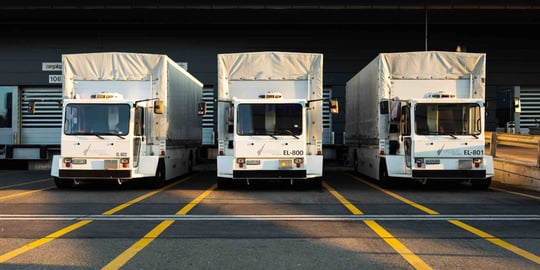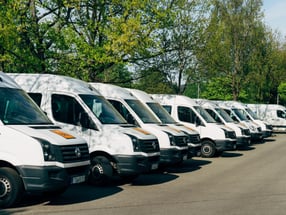From gas to groceries, almost every purchase you make right now is more expensive than it was this time last year. Auto insurance is also on the rise, with rates increasing, on average, by 4.9 percent throughout 2022. These changes will impact more than 62.5 million drivers in the United States, including hundreds of thousands of fleet drivers transporting people and goods.
While you can cut back on some things in your business, your employees can't drive without commercial auto insurance, which is mandatory in the U.S. Your business could switch to another provider, but costs are spiraling across the board. You could find a cheaper policy, but that policy might not cover business-related accidents on the road. That means higher liability costs if you can't prove which driver was at fault after an accident.
Video and dash cams provide a solution to all these problems. It's a proactive way to protect your growing fleet vehicles business and combat insurance and liability costs. Learn more about insurance and fleet management below.
What Happens After an Auto Accident?
There are six million auto accidents in the U.S. every year, and this is what typically happens to fleet drivers after an accident on the road:
- All drivers involved in the accident exchange information, such as names, addresses, phone numbers, license plate numbers, vehicle identification numbers, and insurance details.
- A fleet driver (or your business) notifies your insurance provider of the accident.
- Later, the driver (or your business) gives the provider any bills for damage to fleet vehicles involved in the accident and other insurance and fleet management information.
- The provider investigates the claim.
In many cases, it's difficult for a party involved in an auto accident to prove liability. Both drivers might claim the other person is at fault, which can slow down claims and result in a request for more information from an insurance company. If it's a "your word against mine," an insurance company might refuse to pay a claim after an accident, leaving both parties to foot the bill for expensive repairs.
How to Strengthen an Auto Claim
Many auto insurance providers recommend collecting evidence immediately after an accident to support a claim. In theory, this should streamline insurance and fleet management. However, a fleet driver might receive cuts, scrapes, bruises, or whiplash in an accident or experience more severe injuries such as burns that require immediate medical attention. There's simply no time to collect evidence.
Then there are the mental health effects of being involved in an accident. Even if a fleet driver receives no physical injuries, they might experience extreme stress or traumatic anxiety — conditions often exacerbated by a hostile driver unwilling to cooperate and provide their insurance information. There's usually no way a fleet driver can collect all the evidence without video recording.
Insurance companies suggest drivers collect evidence immediately after an accident. This evidence includes:
- Photos of the accident scene, including images of the fleet vehicle or fleet vehicles involved
- Statements/contact information of any witnesses who witnessed the accident
- A police report that explains who/what caused the accident
But what if a fleet driver's camera or smartphone doesn't work or the battery is dead? What if nobody else witnessed the event? What if the police don't show up at the scene? Law enforcement is not required to respond to every auto accident and might tell a fleet driver to exchange insurance information with the other driver.
These situations prove the difficulty of capturing information for insurance and fleet management challenges.
How Can Video and Dash Cams Solve Insurance Issues for Drivers of Fleet Vehicles?
Video recordings and dash cams accurately depict what happened without any effort by the driver. These technologies record footage while a commercial vehicle is turned on or in motion, which captures real-time evidence before, during, and after an accident.
The best videos and dash cams have an expansive view to film drivers, pedestrians, and cyclists who might cause an accident, providing irrefutable proof to insurance companies about liability and enhancing fleet maintenance management in your business.
Videos and dash cams can also provide law enforcement with evidence if a driver is criminally responsible for an accident. (For example, if the other motorist was driving under the influence of drugs or alcohol.)
You can ensure your business isn't held liable by showing who is responsible for an accident. That means you won't have to pay expensive liability costs or higher insurance rates. (Most providers hike insurance premiums after an accident.)
Other Ways Videos and Dash Cams Combat Liability and Insurance Costs
Here are some additional ways video technologies solve the problems of insurance and fleet management:
Get Discounted Insurance Rates in the Future
Videos and dash cams don't just save you money after an accident. Your current provider might give you a discounted rate after installing these technologies or be willing to negotiate your rate down, making insurance and fleet management costs more affordable in the bigger picture. That's because your provider won't have to pay any costs if you can prove a fleet driver is not at fault if an accident occurs. While installing videos or dash cams in all your fleet vehicles costs money, think about how much money you could save if you can prove liability in the future. You can save insurance funds for new equipment, maintenance, or other items required to run your business.
Coach Fleet Drivers for Better Fleet Maintenance Management
Videos and dash cams are excellent learning resources when training fleet drivers. As these technologies constantly record footage on the road, you can play video clips to employees and help them improve their future driving practices. If someone drives erratically, for example, you can show them a clip from a dash cam video and provide additional training. If someone takes too long to arrive at a destination, offer them a clip and coach them further.
Video-based coaching helps fleet drivers increase awareness of their current driving habits. That can reduce the likelihood of those drivers being at fault for an accident, combat liability, and streamline overall fleet maintenance management. Research shows that situational awareness — when a driver is aware of the traffic around their vehicle — could reduce 35,000 auto-related fatalities in the U.S. every year. Video-based situational awareness coaching can ensure drivers identify blind spots and regularly check mirrors.
Improve Route Management
Recording fleet drivers as they transport people and goods from one location to another can improve route management and save fuel costs. That's because GPS-enabled dash cams check whether drivers are taking the quickest routes to their destination and recommend shorter journeys that save time. You can also prevent accidents by ensuring drivers take the safest ways to a location and don't go down the "beaten path." That can dramatically improve route management.
Review Employee Performance
Videos and dash cams can also expose on-the-road situations that might cause a fleet driver to arrive at a destination late, such as heavy traffic or an auto accident that didn't involve them. These technologies can even record thieves who steal goods from fleet vehicles and prove drivers were not responsible for a theft. Use videos and dash cams when reviewing employee performance and renewing work contracts.
GPS Fleet Systems Help Reduce Insurance Costs
With auto insurance on the rise like almost everything else, more fleet companies are choosing cheaper policies to save cash. However, these policies might not cover business-related accidents, increasing liability costs if you can't prove which driver was at fault. Videos and dash cams record on-the-road events, providing real-time evidence for insurance companies. That can reduce insurance costs, combat liability, and improve accountability in your organization.
Linxup's GPS fleet system can reduce insurance and liability costs and improve overall fleet management. This system tracks drivers as they move between locations, improves route management, and helps with liability issues after an auto accident. You can also monitor the condition of your fleet vehicles.
Contact Linxup at 1-877-907-0801 for a free consultation and to learn more about fleet maintenance management.


